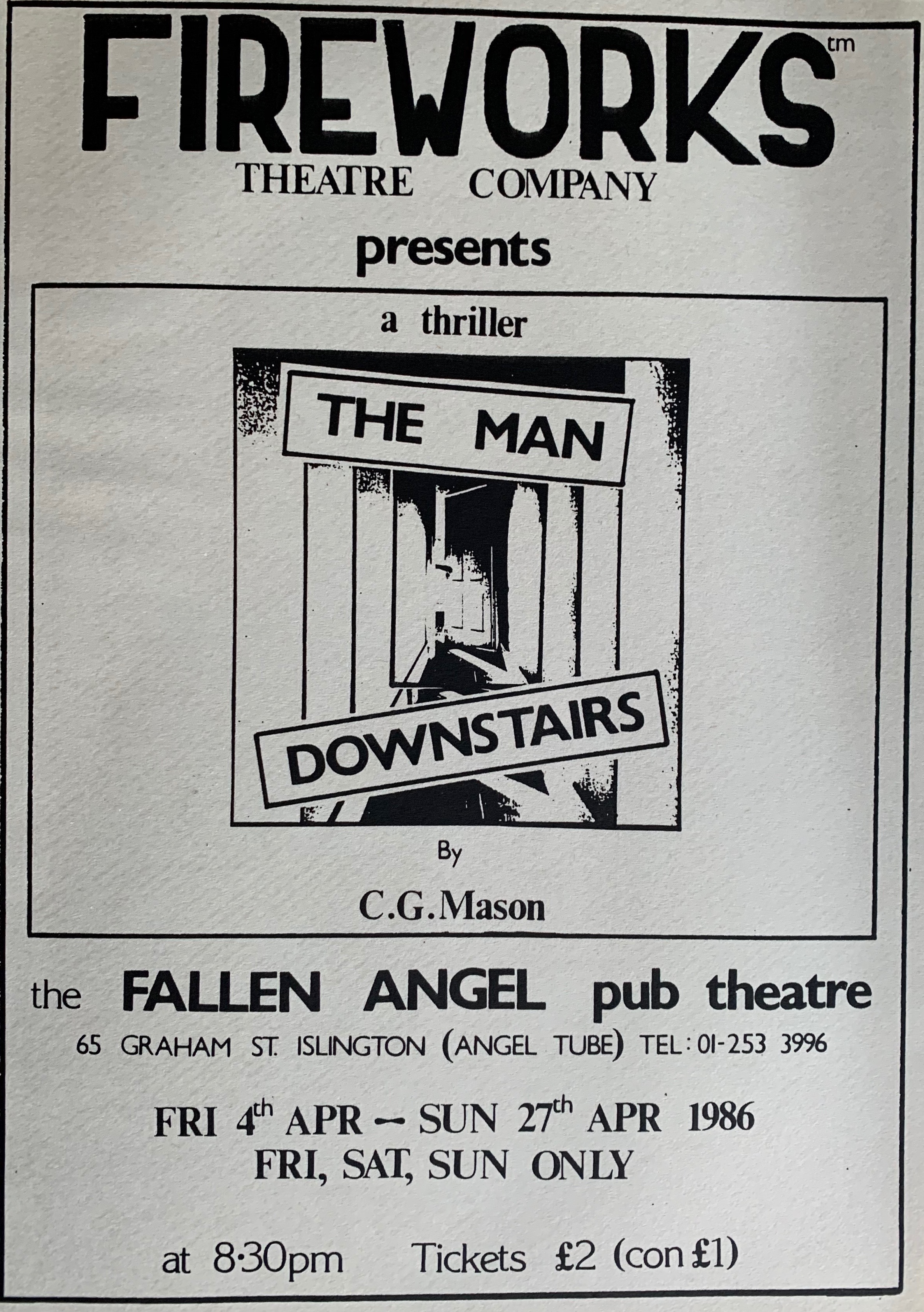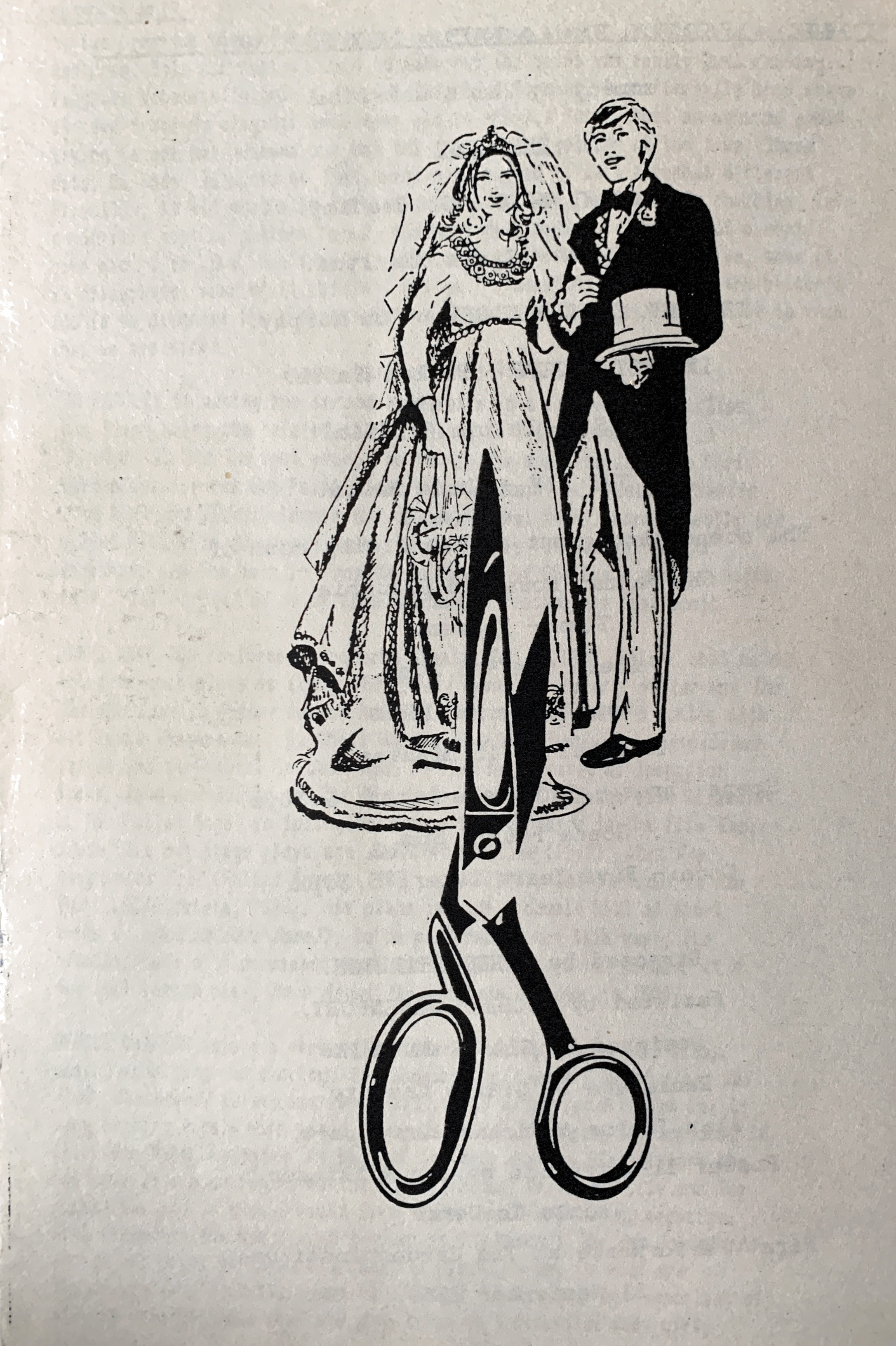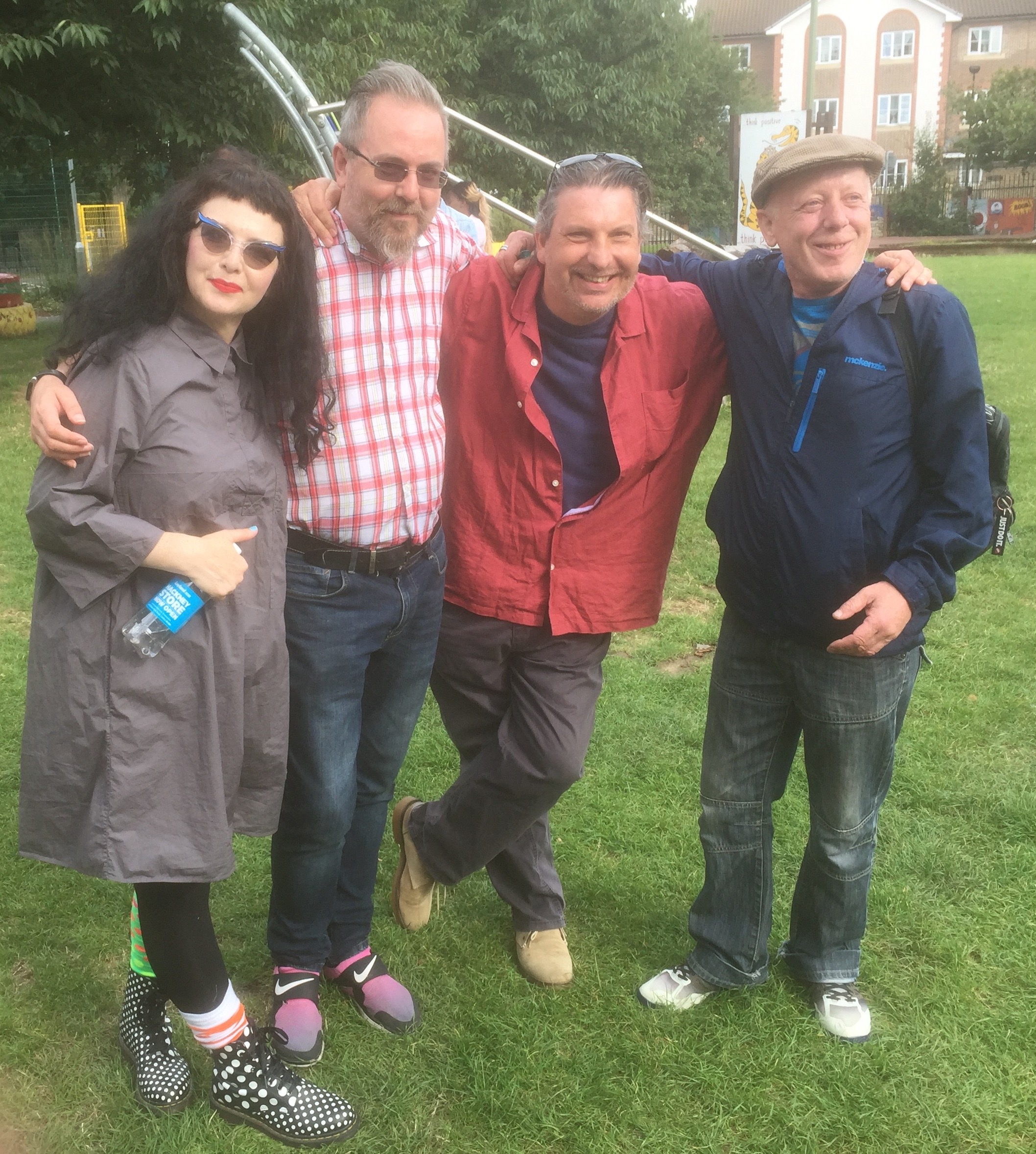Fireworks Theatre Company
Note
In 1985, I formed my first theatre company, Fireworks, with three friends and fellow artists: Deborah Griffin, who went on to a career as one half of fetish club legends The Slag Sisters, a model and muse to photographer Trevor Watson, and fine artist; Chris Mason, a punk guitarist; and my then-partner Daev Monroe. Chris, Debbie, and I had met in the punk Wet Paint Theatre Co. before branching out on our own.
We blagged our way into being given a room upstairs at a gay pub in Islington, The Fallen Angel. We produced two productions, my own farce What Are Neighbours For? and Chris’s thriller The Man Downstairs (written as C.G. Mason). Daev and Deborah were in both productions; I directed my play; Chris directed his own; Chris and I acted in each other’s work. …Neighbours… got notices in City Limits (they loved it) and Capital Gay (liked the writing but not the politics); Man Downstairs in City Limits (they liked the acting not the play). On the whole, for complete unknowns operating on a shoe-string and completely un-networked, we got a decent amount of independent press coverage. We even got respectable audiences.
“We all have personality problems but not usually as acute as Ken's. His is so fractured that it sits in a chair and taunts his weak and watery character about failed love affairs. This depiction of the sadder and sorrier aspects of a solitary gay male’s life shows a gnawing loneliness and highlights the dangers of ‘cruising’... a creditable performance by Tom Murphy as Ken.” – City Limits on The Man Downstairs
The character Ken in The Man Downstairs was based on the serial killer Denis Nilsen, and was played by Tom Murphy. I’d known Tom at school; he played Banjo in my production of Kaufman and Hart’s The Man Who Came to Dinner. When I formed Fireworks, I got in touch with Tom and asked him to act with us. He played the creepy Roger Crawley in What Are Neighbours For? and subsequently performed in all of Fireworks’ productions. Later, he performed in my play at the Warehouse Croydon, and had a had a great personal success in my production of Jim Kenworth’s Gob. He was 18 when he first joined up with us in Fireworks (I was 19).
We then presented my play Straight to the Top at the London Lesbian and Gay Centre, transferring it to the Etcetera Theatre for a further run. City Limits and What’s On both gave the plays excellent reviews.
“Top 10 Recommended Shows” – What’s On on Straight to the Top.
Jo Bradley, another veteran of the punk theatre company Wet Paint, joined us for this production and went on the play the lead role in the next, The World & his Wife. Daev and I had gone our separate ways by now. We had ever diminishing funds by the time of The World and his Wife, it was harder to blag your way into venues. The play saw only a handful of performances at the Camden Institute and Duke of Wellington pub in Islington.
Debbie and Chris left the company at the end of the 1980s. I continued in 1991 with the ambitious production of More About the Language of Love, during which I met two long-term collaborators, actors Euan Macnaughton and Caroline Burns Cooke. The production was ambitious – the play three hours long, the company ten strong, a surreal and eye-catching set by Deborah Harding. We took over the upstairs room of a pub on York Way in King’s Cross called The New Copenhagen. We had to struggle against the pub dog, who would leave his own “reviews” of the play on the set for us to clean up before the shows. We got pretty good - if shocked and berating us on the length – reviews in a free magazine called Good Times and in What’s On, and a real stinker in Time Out.
“A three-hour nightmare” – Time Out on More About the Language of Love
In 1992 Fat Souls won the International Playwriting Competition at the Warehouse Theatre in Croydon. Tom and I had been continuing the Fireworks name with a children’s show, Tales of the Brothers Grimm, which we co-wrote and performed at schools, children’s parties, and once at the Warehouse Theatre. Fireworks returned to the London fringe in 1994 for a revival of Chris Ward’s Wet Paint play Amphibious Babies at the White Bear, featuring Caroline Burns Cooke and, as usual, Tom. This got great reviews in Time Out and What’s On, where we were a recommended show.
“Fireworks Theatre Company on great form in this searing revival of Chris Ward’s bleak but hopeful depiction of disaffected youth.” – What’s On ‘Best of the Rest’ on Amphibious Babies
We followed this in 1995 with a revival of The World & his Wife. Euan Macnaughton returned to the fold and produced the play with is then-partner, Helen Grear. Tom, who was the vicar in the original production, now moved to the bullying husband Mike. Sadly, Jo who’d created the role of Christine, had died in a road accident in 1990; we dedicated the production to her. Christine was now played by Hilary Crowson, best known for her role in Carla Lane’s long-running sitcom Bread. The final cast member, Tim Kane, took Tom’s old vicar role, and became another long-term collaborator. Time Out gave us a really rotten and scolding review, by the same critic who’d hated More About the Language of Love. I don’t know whether we were her nightmare or she ours. Gay magazine Boyz gave us some more positive coverage.
“Woefully immature theatre which is neither clever nor funny” – Time Out on The World & his Wife
After this, a five of us formed another theatre company. Friendly Fire Productions. I revived the Fireworks name once, for the 2000 Edinburgh production of Caroline Burns Cooke’s play Saved by Sex. The play didn’t feel right for Friendly Fire. Tom, now Hayes, was now co-starring with a namesake, Melvyn. The play received some respectable reviews, a rave from Scotsgay, as well as a stinker from The Scotsman.
“A warm welcome to the Fringe” – Scotsgay on Saved by Sex
Fireworks was always a spit and sawdust enterprise. I think Melvyn was the only performer who ever got paid – we were a product of the days when profit share was not only acceptable, it was presumed. We certainly never had any money to pay anyone! We never received any subsidy or funding. Being from working class backgrounds and never having (until I went to Uni) any higher education, we wouldn’t have known how to fill in a grants form!
We were driven by an ambition to create work, to give ourselves CVs, to put on something different. I connected with some of the most significant collaborators of my career. Fireworks showed that I was a director & leader as well as a writer. I learned about entrepreneurialism, the theatre industry, collaboration, organisation. Fireworks was never a significant critical or audience success; we had our share of admiring reviews and got people in the door somehow or another. For a bunch of total nobodies from council estates, we did alright in putting ourselves out there as artists, creating careers from the only possessions we had, chutzpah and imagination.
Many years later, Deborah, Chris, Tom and I hooked up at a performance of my 2019 production Alice in Canning Town. Debbie had started acting again, she’s in the film In Fabric; I invited her to play Ms Hatter. Chris, now writing a novel, and Tom, still acting as ever, came to a performance. There we all were, surviving and thriving.





.jpg)
.jpg)
.jpg)
.jpg)
.jpg)
.jpg)